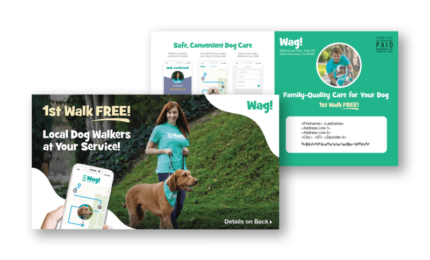3 Areas To Focus On In Your 2023 Direct Mail Strategy
By Ashley Jorgensen | December 15, 2022

Check out this article on Forbes!
Marketers are looking for ways to optimize their budgets while also driving great results and ROI. So why not incorporate direct mail into your marketing strategy in 2023?
Statistics from the U.S. Postal Service (USPS) suggest that direct mail seems to be coming back: Marketing mail revenue in particular increased $681 million, or 4.9%, over the previous year. USPS notes that while it is rebounding, marketing mail volume is still lower than it was pre-pandemic.
But to make a strong case for mail moving forward, we have to understand and deal with the elephant in the room: inflation.
Rising prices on ink, paper and postage add to uncertainties in an economy that’s sending mixed signals.
Cutting back spending on marketing is a tempting idea—but also a bad one, in my opinion. Instead, stay consistent with your efforts by sticking to a long-term strategy.
Below, I’ve outlined three strategies that could help you spend your dollars more smartly now—and build for the future.
1. Find Your Audience Or Audiences With Better Data
Data has long been the king of direct mail. Using it wisely is an art as much as science because of the explosion of data points collected by or available to marketers.
The increasing costs I mentioned before are a direct challenge to your bottom line. While they will probably moderate at some point (costs often do), spray-and-pray as a strategy no longer makes sense to me.
Your challenge is twofold: to figure out what audience to reach—and to figure out how.
- Start by making sure that all of your data is accurate. Dedupe and standardize names, addresses and so on.
- Next, tap USPS’s National Change of Address (NCOA) database to ensure that any mail still goes to the right place.
- Then, depending on your campaign goals, look at any gaps in your data that you need to fill in. For example, you may need to look for physical addresses or IP locations for digital visitors or email-only customers. Profile or persona information from second- or third-party suppliers can also help you align your products or services with the right prospect or customer.
With your data under control, you can apply recency, frequency and monetary (RFM) metrics or other data analytics to target segments with a high propensity to purchase. Keeping that all-important budget in mind, you can make better decisions about what cohorts to target and with what channel or channels. You can get even more granular by personalizing your messages to different segments of your audience.
The bottom line here is to think of how your audience will react to the piece that you send them. Relevant data is meaningful and can help you produce results.
2. Trigger Touchpoints With An Omnichannel Strategy
The customer journey today is about how different channels work with each other. Direct mail and digital channels like email and social have touchpoints that can trigger each other and result in a desired action.
Which ones work best for delivering good ROI? There’s no single answer: It depends on your goals and budget, among other factors. But one thing is certain: Many consumers today are likely to expect your brand to be present in multiple channels.
A data-driven omnichannel strategy will help you decide how to fit direct mail into the right place. A printed piece is tactile, and you can use it to activate different touchpoints than you typically would in other channels. For example, consider using QR codes, personalized URLs (PURLS), promotional URLs, phone numbers or prompts to schedule in-person visits.
On the flip side, mail also has a role to play in automated campaigns. You can send personalized mail pieces to complete a sale after someone visits your website or completes another programmatic action.
3. Present Options And Solutions For Your Customers
Maybe “pivoting” has become one of those overused buzzwords by now, but it really is a skill that’s well worth having.
At my company, I’ve had marketers over the last year looking for options due to disruptions to the printer supply chain, as well as price increases for consumables like paper and ink.
Rather than simply mailing less (or not at all), this is a good time to be flexible. Depending on your campaign goals, you can achieve the same or similar mailer designs (and results) by getting creative with your materials.
For example:
- Thinner or lighter paper or your printer’s house stock may cost less—and be immediately available.
- Reduce envelope weight by using fewer components, or even replace them in your campaign by sending folded self-mailers or jumbo postcards instead.
- Stick to standard size No. 10 envelopes, which I’ve found are often easier to source. But to stand out in the customer’s mailbox, add inks or finishes.
An important key to making this work is to start your campaign planning as early as possible for more certainty about securing paper as well as lower pricing. Rethinking your design by focusing on the relevancy of what you’ve been used to working with may just bring about those reduced costs you need.
Improve Now And Set Yourself Up Future Success
Incorporating these and other ideas into your 2023 planning isn’t just about meeting the current and ongoing challenges. Among the lessons we marketers learned from the pandemic is about the need to adapt quickly to new conditions. The choice is yours: Pause where you are now, or explore other areas that could allow you to grow your business.


